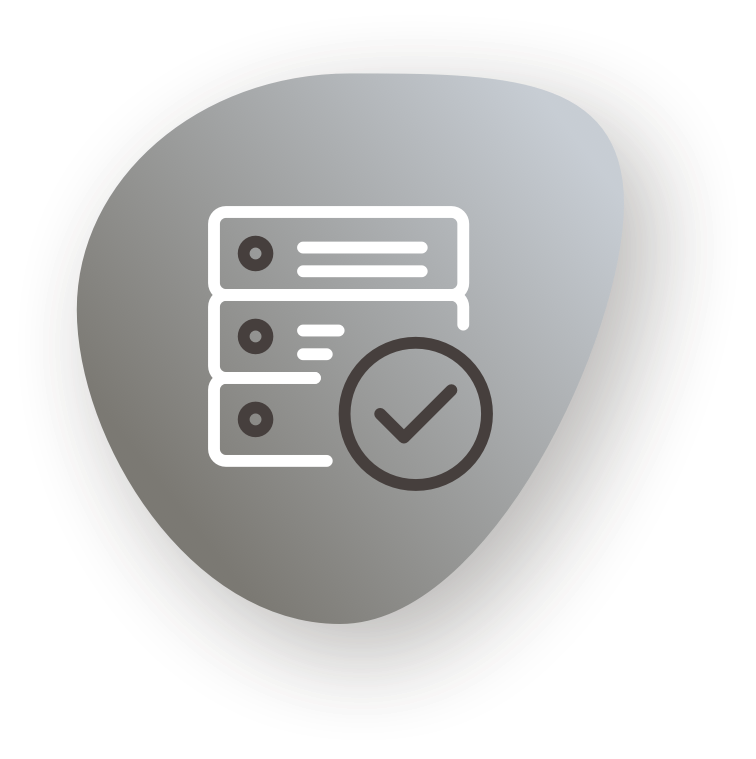Read the best UX/UI cybersecurity tips and tricks for 2024. Get the most out of your digital design!
The key components of any successful tool or software are user experience (UX) and user interface (UI). UI/UX makes a product visually appealing, easy to use, and secure. It’s a key factor in customer satisfaction, as it is responsible for the part of the software with which the user will interact most.
However, one aspect of UX and UI that often gets overlooked is the implementation of cybersecurity practices. Lack of proper cybersecurity measures during UX design can expose users to malicious attacks and data breaches.
There’s no denying that user trust is critical for successful businesses. To gain it, companies must improve security and ensure users that their data is protected.
Start your day
with great
quality
content
The Need for UX Security
According to a 2019 study by the Ponemon Institute, the average cost of a data breach is $3.92 million. That figure has risen by 12% since 2018. Additionally, the number of records compromised in a data breach increased by nearly 50% in the same period. This data highlights the importance of incorporating cybersecurity measures from the beginning of the development and interface design process.
Consider the story of the Target data breach in 2013. Target’s point-of-sale system had a vulnerability that allowed hackers to access customers’ credit card information, resulting in the theft of over 40 million credit card numbers and the identities of 70 million customers.
Another example was the Equifax data breach in 2017. Hackers accessed the personal information of over 145 million people, including Social Security numbers and credit card numbers. It serves as a reminder of the importance of using secure encryption and having proper security measures in place.
While cases like this show the importance of incorporating more robust cybersecurity measures when developing a digital product, it is up to the UI/UX designers to ensure that any security features of an app or a website are taken into account from the very beginning, is visually appealing and does not interfere with the user experience.
The Principles of Secure by Design:
When designing secure UX/UI systems, several principles must be kept in mind.
- The first is usability. The user interface should be easy to use and understand. This means that the interface should use familiar language and layout and be intuitive for users to interact with.
- The second principle is security. The interface should be designed with security in mind (to protect user data and systems from cyber threats, such as malware or denial of service). The interface should use robust authentication methods, such as multi-factor authentication, and it should be designed to minimize the chances of data breaches.
- The third principle is accessibility. The interface should be designed to be accessible to users with disabilities and thus have accessibility features, such as text-to-speech capabilities. It should be usable by a wide range of users.
- Finally, the fourth principle is privacy. The interface should be designed to protect user data and privacy, minimize the collection and storage of user data, and protect user data from being accessed by unauthorized parties.
Cybersecurity Tips for Satisfied Customers
1. Provide a Simple Authentication Method
Biometrics with single sign-on (SSO) authentication allows users to securely access multiple applications and services with one set of login credentials. This eliminates the need for users to remember multiple usernames and passwords and reduces the risk of unauthorized access to user accounts.
Examples of single sign-on authentication include Facebook Login and Google Sign-in. These services allow users to log in to any website or application with their existing Facebook or Google credentials. This makes logging in much simpler and more convenient for users.
2. Educate your Users
You can make users more aware of cyber threats by using the following practices:
- Customer Support:
Provide excellent customer support by having a knowledgeable and friendly staff that answers customer questions quickly and accurately, setting up automatic notifications if the customer hasn’t logged in a while, or providing helpful information if they need to reset their password.
- Pop-Ups:
Use pop-ups to remind users of cyber security tips. For example, you can use pop-ups to remind users to change their passwords regularly, not to use the same password for multiple accounts, or that their account has been inactive for a while. This will help users stay aware of their security without compromising their user experience. You can even make use of pop-up surveys that allow you to evaluate your users’ security awareness or add an interactive element to the content.
- Security Checkpoints:
Implement security checkpoints to help users stay aware of the latest security threats and vulnerabilities. For example, you can use security checklists to verify the validity of the links they click on.
- Security Education:
Provide security education to users to help them stay aware of the latest security tips and threats. You can do this by hosting webinars or sending out regular security tips. This way, users will be more informed about cyber security and will be able to take the necessary steps to protect themselves.
- Safety review systems:
Implement measures to ensure that users are following safety protocols. This can include peer-reviewing and rating systems that allow users to report suspicious behavior or report potential security issues.
3. Incorporate Robust Security Measures
Security tools are essential for keeping websites and networks protected from malicious attacks. They help protect user data, prevent unauthorized access, and provide enhanced security for user accounts.
App Security Features:
UI/UX designers should incorporate these features to ensure safe-to-use apps.
Security Questions
Security questions provide an extra level of security by verifying the identity of the app users. When clients reset their password from a new location or network, the system will prompt the client to select their security question and enter the answer before creating a new password. Below are some suggestions for security questions:
- What was the house number and street name you lived in as a child?
- What primary school did you attend?
- In what town or city did you meet your spouse or partner?
- What is the middle name of your oldest child?
- In what town or city was your first full-time job?
Secure Code
Secure coding practices entail writing code in a way that will prevent potential security vulnerabilities. This includes maintaining your source code and any third-party libraries in a secure state.
It’s a good idea to add these measures to your secure coding checklist:
- Code minification and obfuscation
Minification removes white space and line breaks from your code, while Obfuscation turns human-readable code into text that is difficult to understand
- Avoid shortcuts
Such as leaving hardcoded credentials and security tokens as comments.
- Automated scanning & code reviews
A combination of regular secure code reviews and automated tools that scan your code for these vulnerabilities can help prevent such attacks.
- Avoiding components with known vulnerabilities
Avoid components with known vulnerabilities and constantly monitor components for new vulnerabilities throughout the development process; this will ensure the integrity of your code.
- Auditing & logging
Software with sufficient logging and monitoring will allow you to detect potential incidents when your code is deployed in a production environment.
Reliable Data Storage
To ensure your project data is secure, incorporate these data storage best practices:
- Store private data within internal storage.
- Use SharedPreferences in private mode.
- Store only non-sensitive data in cache files.
- Store data in external storage based on the use case.
Start your day
with great
quality
content
Security Tools for UX/UI Designer Teams
When designing a new app, UI/UX designers should also use certain tools themselves to ensure maximum project security. These include:
VPN
With threats on the rise, encryption ensures that data cannot be read by anyone other than the intended recipient. With the help of a trusted VPN, UI/UX designers can protect their organizations’ and clients’ intellectual property (proprietary code, custom designs, frameworks, apps, financial data, contact information, schematics, and patents) from being stolen/used/traded by hackers.
It can also be used for access control – VPNs act as a data shield when users interact with apps and web properties over the Internet by keeping certain resources hidden. Organizations can control which users (designers or clients for example) have access to which resources by setting up several different VPNs. Each VPN assigns different users different internal resources and different data access levels.
Secure file sharing
With remote work becoming a norm, it’s essential for design teams to share files quickly and securely. Here are some secure file-sharing tools & software for business:
- Files.com
- FileWhopper
- Dropbox Business
- OneDrive for Business
- ExaVault
- Google Workspace Drive
Collaboration tools
When designing an app, having a reliable software development collaboration platform is key. Here are a couple of suggestions:
- GitHub
- Jira
- Confluence
- Monday.com
1. Overdoing security kills!
Building trust through secure systems is important, but there has to be a good balance between security and functionality. Overdoing security kills the functionality and hence spoils the user experience. Following are some examples:
- Putting in place overly restrictive rules for accessing accounts or completing transactions can frustrate users and cause them to abandon their attempts. Instead, implement measures that are easy to understand and follow.
- Avoid Complex Captchas: Captchas are important for protecting against malicious bots and automated scripts, but they should not be so difficult that they become a barrier to entry. Instead, use Captchas that are easy enough for humans to solve but difficult for robots.
2. Take less and Give more
Collecting too much data and storing too many cookies can hurt user experience. With the average internet user now facing 250 cookies and some sites collecting over 500 data points, it’s no wonder users are feeling overwhelmed.
According to a study conducted by the Institute of Digital Relationship Management, reducing the number of data points collected by a website can significantly impact the user experience. The study found that reducing the number of data points collected from 500 to 50 significantly improved user experience.
In addition to boosting customer satisfaction, it can help protect users’ privacy and ensure they feel safe.
3. Make it Transparent
Designing for transparency is a great way to secure user data while still providing an enjoyable experience. Through collaboration from the design and security teams, organizations can create a user experience that is both secure and visually appealing.
Following are some examples:
- Simple privacy settings:
Providing users with simple and clear privacy settings allows them to adjust their preferences and determine what data they are comfortable sharing. Make sure that the safety features are prominent and easy to find – users should have access to a privacy policy or terms essential for understanding their rights and responsibilities.
- Clear instructions:
Provide detailed, yet easy-to-understand instructions on how to use the product responsibly and safely. This includes instructions on securing the product, properly using it, and being aware of their environment. Avoid using any technical jargon that could confuse users.
- Flexible data management:
Offering users the ability to delete their accounts and data anytime assures them that their data is secure and in their control.
Conclusion
In conclusion, to keep your business running successfully and to retain customers in the technology era, you need to adopt the principle of secure by design when working on UI/UX, to ensure usability, security, accessibility, and privacy.
UX Security tips like simplifying authentication methods, educating your users, utilizing security tools, avoiding complexity, collecting less data, infusing security into the design process, and making the product accessible for people with disabilities are all crucial steps for ensuring safety and increasing customer satisfaction.










